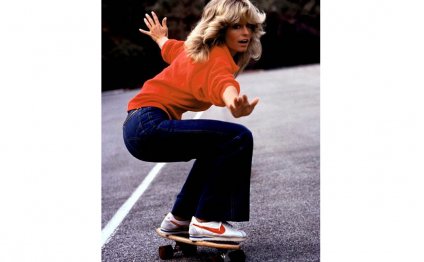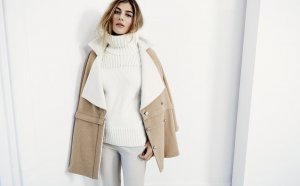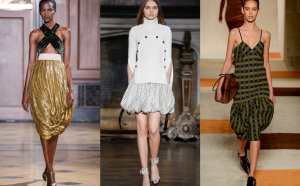
Womens Fashion trends
The Fall 2016 programs of New York Fashion Week tend to be more than, although different styles submit by the manufacturers however linger. One interesting trend that surfaced was unconventional layering: layering sleeveless clothes and tops over-long sleeved shirts and sweaters. But this unconventional layering strategy is clearly quite main-stream for a subset of the populace to which I belong: Ultra-Orthodox Jewish women,
Orthodox legislation of modesty, which include covering the feet, arms and upper body, prevent these women from partaking in a lot of manner styles. When you look at the late aughts, it had been difficult, often impractical to find dresses with sleeves. So Orthodox women, wanting to match modern styles, relied on what they call “shells”: layering shirts, usually made from body-skimming lycra, worn under those sleeveless, low-necked and strapless confections. Because it became more and more typical to wear shells, it shortly grew into a trend of their very own. Shops catering to spiritual Jewish females have racks of sleeveless tops and outfits, and salesladies help customers style all of them with a comprehensive offering of shells available for sale nearby in a rainbow of shade choices.
Fashion has actually a long history of being prompted by the “other” – the exotic, the various. And rigid adherence to religious practices in an increasingly secularized globe is progressively international to many. Dolce and Gabbana’s reveals usually reference the regal solemnity of Catholicism. Hussein Chalayan’s evocative Spring 1998 collection added models in white Islamic chadors of varying lengths, closing with a floor-length black colored chador. Karl Lagerfeld courted debate at their Spring 1994 couture collection as he delivered Claudia Schiffer along the runway in a black bustier gown with a Koranic verse embroidered in pearls. And Jean Paul Gaultier’s Fall 1993 collection ended up being right prompted by Hassidic garb; the program invites also contained Hebraic script.
But here, the impact of Orthodox women on unconventional layering is slight. No designer features explicitly claimed that he / she had been empowered by Orthodox females. However developers are innovative those who are encouraged because of the world around them. Because unconventional layering is common between the Orthodox, it really is much more likely than not that style designers would experience and get confronted with Orthodox women and women putting on this look on crowded Manhattan roads or in the heart of l . a .. Both towns have actually big Orthodox Jewish populations and house the showrooms of all major United states fashion developers. And Orthodox females stand out: If you notice a lady using a shirt under a sleeveless, knee-length dress, there is certainly an excellent chance this woman is Orthodox; the probabilities increase if dress is worn during new york’s oppressively hazy summers.
This subconscious coopting of Orthodox modes of dress are explained by the rise of street style. Street design has actually manufacturers seeking to the street, into method ordinary individuals built pieces that don’t generally get collectively. Unconventional layering is amongst the numerous ways street design movie stars differentiate on their own from the water of other well-dressed and well-heeled fashion tv show attendees. Simi Polonsky, one half of a Hasidic sister duo behind The Frock, a line of moderate concepts, agrees: “I really think that today fashion is using a more private, interpretive approach. [And] unconventional layering is approximately improving and incorporating depth to an existing item that may be donned by itself.”
it is simple to put on a gown that arrived off the runway, however, if you “remix” it – to borrow manner blogger parlance – you produce a look that’s personal and unique. Globalization features resulted in increasing homogeneity in gown across countries. And manufacturers, in tremendously crowded business, are always trying to differentiate by themselves, to create some thing unique.
For Fall 2016, manufacturers took varying ways to the trend. Peter Copping at Oscar de la Renta layered basic, tissue-thin mock throat sweaters under jacquard knee-length cocktail dresses with v-necks. At Tome, the layered appearance ended up being decidedly much more risqué, with absolute, lacy lingerie-inspired tops layered under tops and dresses; an even more explicit mention of the layering top’s undergarment origins. And public-school, Prabal Gurung and Proenza Schouler all utilized printed tops to include level to neutral v-neck outfits.
Unconventional layering as inspired by Orthodox ladies isn't only an isolated trend. It really is section of an increasing desire to have covered-up elegant across-the-board. Mimi Hecht, a co-owner together sister-in-law Mushky of minimalist, Hasidic fashion brand name MIMU MAXI, explains, “i believe generally speaking, manner is checking out a lot more with modesty… developers these days tend to be using this determination and achieving lots of fun with it.”
RELATED VIDEO



Share this Post
Related posts
Winter Style
WinterStyle.com specializes in premium quality winter months outerwear accessories. Discover the seasons hottest winter months…
Read MoreLatest Womens fashion trends
From the allure woman into free-spirited bohemian, our favourite 1970s design stereotypes still encourage for springtime…
Read More










